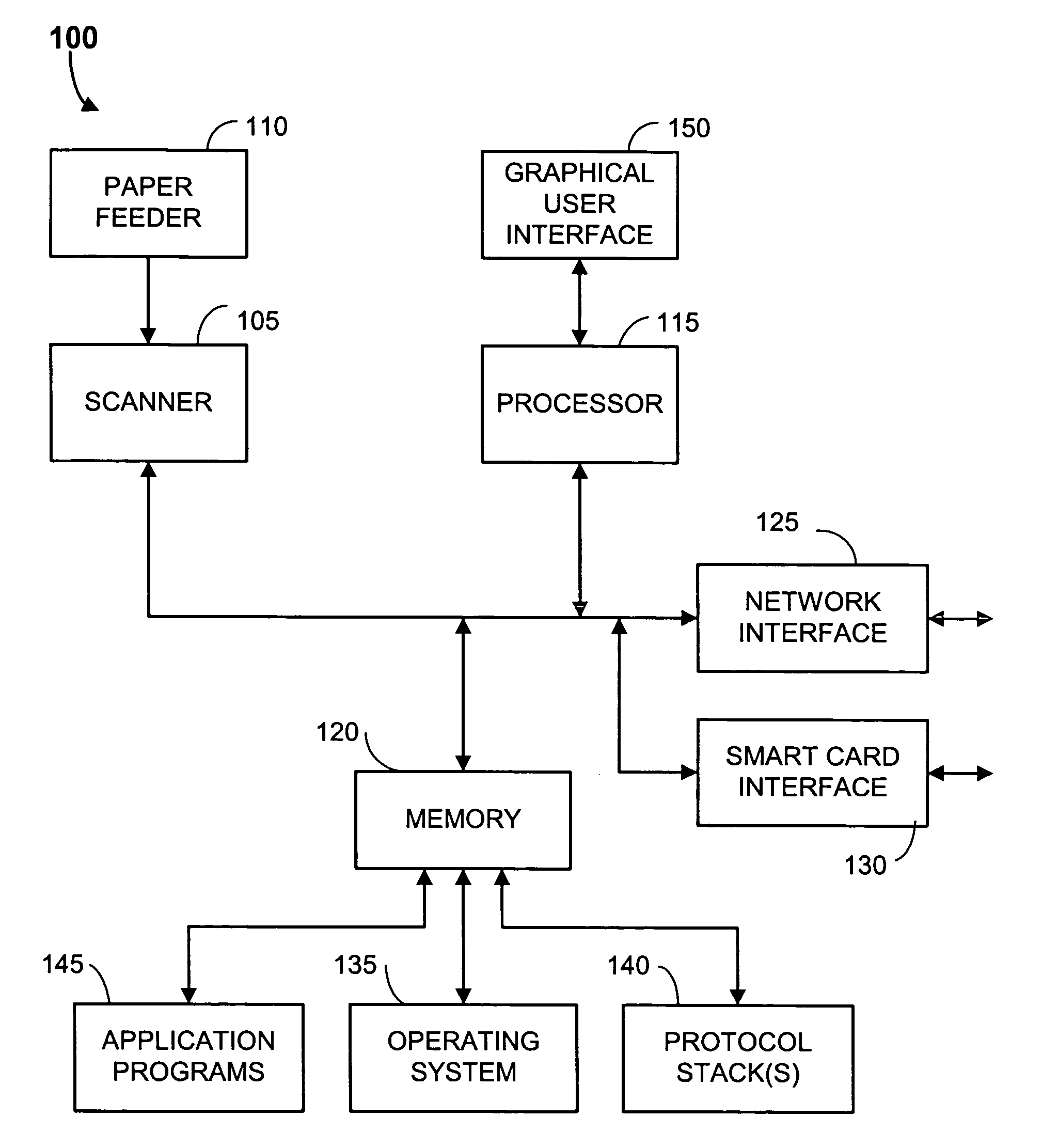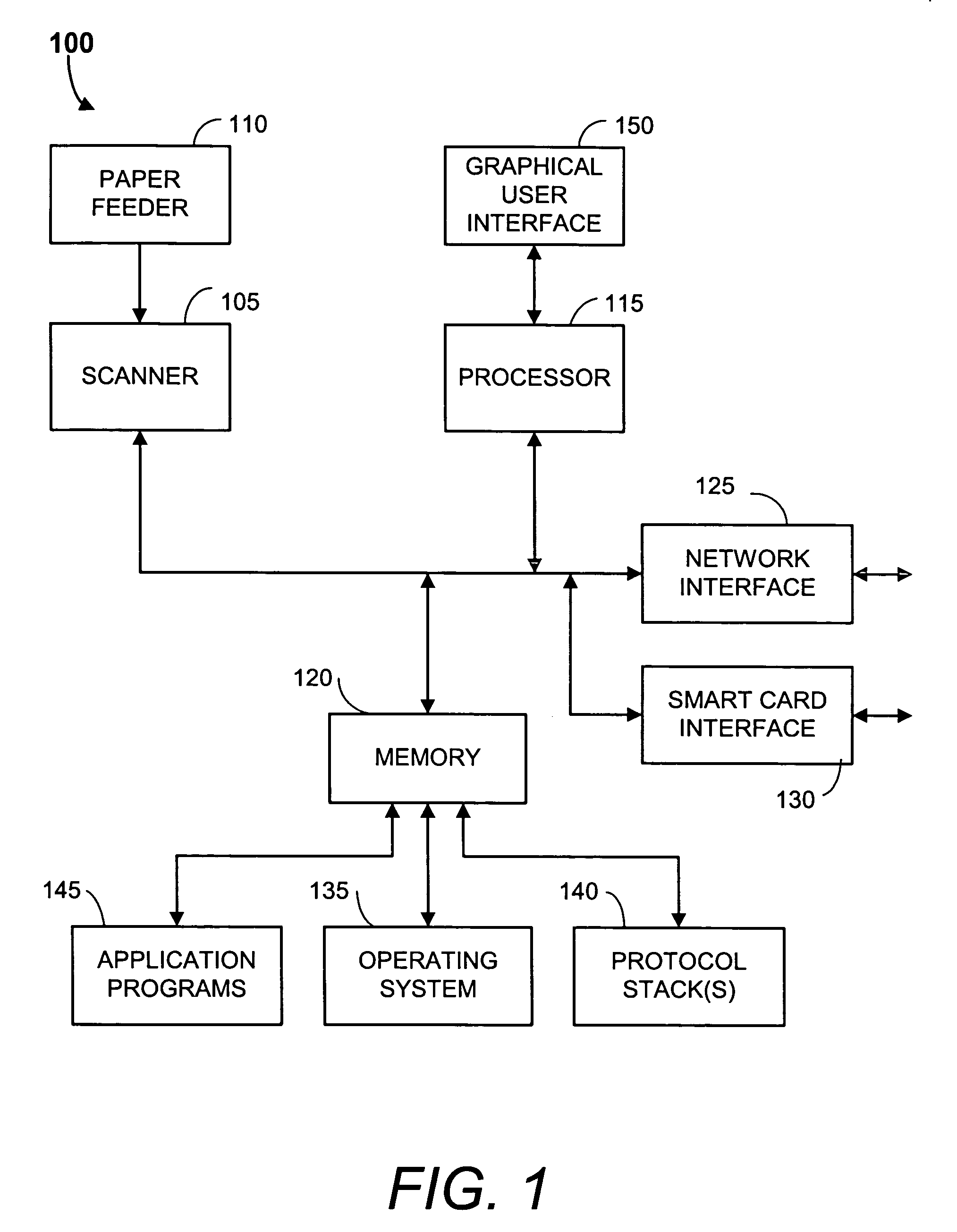Network scanner for global document creation, transmission and management
a network scanner and document creation technology, applied in the field of electronic document creation, storage, transmission, management, can solve the problems of not widely adopted technology, per-page telephonic transmission delay, and the resolution of copies is not as good as a standard copy machine, so as to facilitate human-machine interaction, eliminate the uncertainty of email transmission, and strengthen the effect of sender authentication security
- Summary
- Abstract
- Description
- Claims
- Application Information
AI Technical Summary
Benefits of technology
Problems solved by technology
Method used
Image
Examples
Embodiment Construction
[0030]This application is a continuation-in-part (CIP) of the presently pending U.S. patent application Ser. No. 10 / 930,821 entitled “METHODS, SMART CARDS, AND SYSTEMS FOR PROVIDING PORTABLE COMPUTER, VoIP, AND APPLICATION SERVICES”, filed on Sep. 1, 2004 now U.S. Pat. No. 7,451,921, the disclosure of which is incorporated herein by reference in its entirety. All of the disclosure of the present application is explicitly combinable with the disclosure of the parent application to form various combinations of systems whereby the network scanner takes the place of or operates in conjunction with the VoIP or FoIP device in the parent application. Likewise, any of the network and server functions described in the parent application may be used to augment the network based systems and methods described herein.
[0031]FIG. 1 illustrates an exemplary embodiment of the network scanner apparatus 100 (“network scanner”) of the present invention. The network scanner 100 includes a scanner engine...
PUM
 Login to View More
Login to View More Abstract
Description
Claims
Application Information
 Login to View More
Login to View More - R&D
- Intellectual Property
- Life Sciences
- Materials
- Tech Scout
- Unparalleled Data Quality
- Higher Quality Content
- 60% Fewer Hallucinations
Browse by: Latest US Patents, China's latest patents, Technical Efficacy Thesaurus, Application Domain, Technology Topic, Popular Technical Reports.
© 2025 PatSnap. All rights reserved.Legal|Privacy policy|Modern Slavery Act Transparency Statement|Sitemap|About US| Contact US: help@patsnap.com



